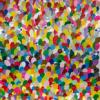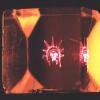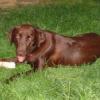I can see the case for taking this pair of supplements, but is no one phazed by the GABA connection to benzodiazepines, which have been linked to more aggressive Alzheimer's progression? Granted, it may be that people who take benzos do so because they experience more stress, which is of course bad for the brain; in other words, the relationship may not be causal. So to anyone who has taken this stuff for more than a month: have you noticed anything in this regard?
Here's the story at Harvard. "In the study, the greater a person’s cumulative dose of benzodiazepines, the higher his or her risk of Alzheimer’s." It at least sounds causal.
And then: "If you have ever taken Valium, Xanax, or some other benzodiazepine to calm your nerves or sleep better, you may have felt woozy or hungover the next day." -- Does this supplement make you feel like that the next morning, if you take it at night?
Could you please explain a bit more about this connection?
Honokiol acts on the same GABA(A) receptors as benzos according to this Wiki article. Likewise for magnolol. Wiki also states: "However, honokiol has been shown to achieve anxiolysis with fewer motor or cognitive side effects than GABAA receptor agonists such as flurazepam and diazepam" as though this is good news. That sounds like "beer won't get you drunk as quickly as vodka". Does that mean beer is a health food? No. This is the problem, then: if I want honokiol's benefits (neurite outgrowth among them, ironically), I need to suffer these unspecified "cognitive side effects". Does that mean Alzheimer's accerlation? Maybe Wiki is just plain wrong, but where's the evidence one way or the other?
What's so frustrating is that we don't know if the action of benzos on GABA is actually accelerating dementia, or whether people are taking benzos because they're already experiencing intense stress and anxiety which themselves cause cognitive decline. But honokiol and magnolol are different substances, so in a perfect world we would just look at the longterm cognitive health of people who take them. Does such data exist?
It's also interesting that honokiol and magnolol can stimulate neurite outgrwoth at some low doses but the former is neurotoxic at 100 uM or less according to source [38] in this paper. Granted, neither of these "facts" come from human studies, or even studies of human neurons. So the only takeaway is that we're dealing with a double-edged sword. While I think 100 uM would be impossible reach in a single dose, perhaps this stuff could accumulate and cause problems over long periods of use.
I don't want to be overly paranoid and dismiss these obviously promising compounds without good reason. But I'd like to see some human cognitive data, or even anecdotes, over several months or years of use.
If any of you have been taking this stuff for a long period of time, please tell us about the cognitive changes you've noticed, if any.
Edited by resveratrol_guy, 28 August 2015 - 02:31 PM.


















































